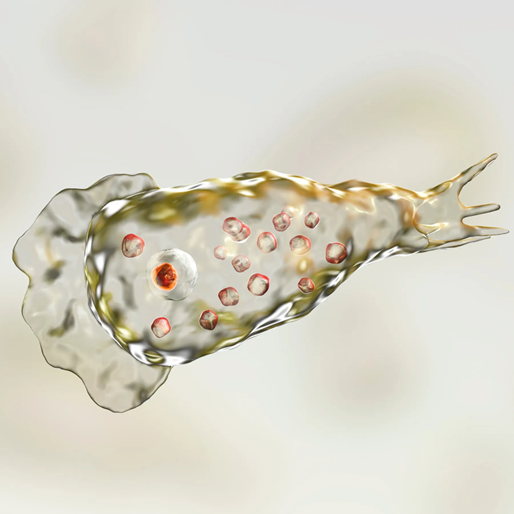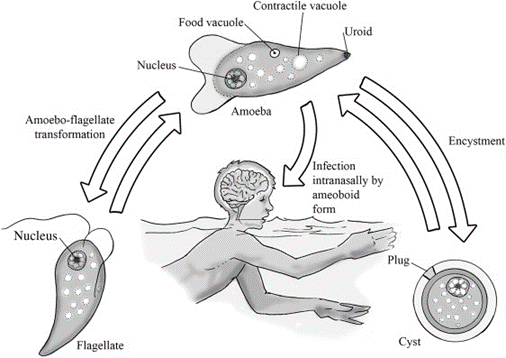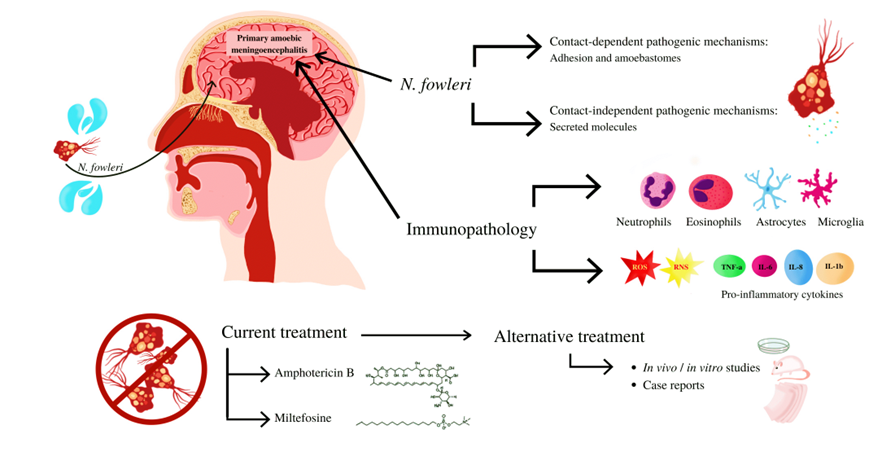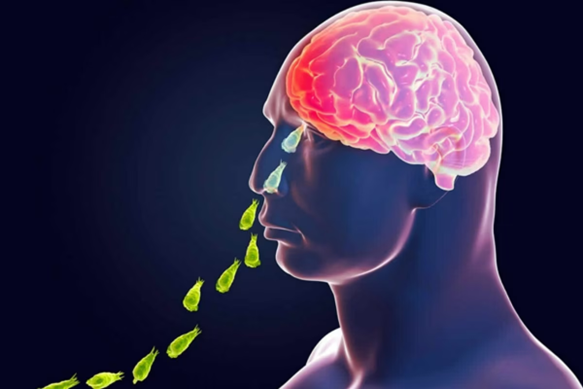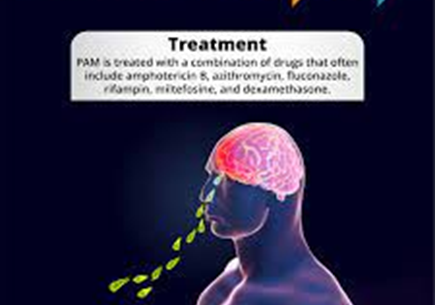A five-year-old girl undergoing treatment for primary amoebic meningoencephalitis (PAM), a rare infection caused by Naegleria fowleri or “brain-eating amoeba”, died at the Government Medical College Hospital in Kozhikode. In past too, the rare yet deadly infection has claimed several lives.
Naegleria Fowleri | Brain Eating Amoeba
Why In News
- A five-year-old girl undergoing treatment for primary amoebic meningoencephalitis (PAM), a rare infection caused by Naegleria fowleri or “brain-eating amoeba”, died at the Government Medical College Hospital in Kozhikode. In past too, the rare yet deadly infection has claimed several lives.
What Is Primary Amoebic Meningoencephalitis
- Primary amoebic meningoencephalitis (PAM) is a rare brain infection that is caused by Naegleria fowleri. It is a free-living amoeba or a single-celled living organism.
- Naegleria fowleri lives in warm fresh water and soil around the world, and infects people when it enters the body through the nose. Higher temperatures of up to 115°F (46°C) are conducive to its growth and it can survive for short periods in warm environments.
- The amoeba can be found in warm freshwater, such as lakes and rivers, swimming pools, splash pads, surf parks, or other recreational venues that are poorly maintained or minimally chlorinated.
How Does Naegleria Fowleri Infect People
- Naegleria fowleri enters the body through the nose, usually when people are swimming. It then travels up to the brain, where it destroys the brain tissue and causes swelling.
- In the recent Kozhikode case, it is being suspected that the girl was infected while swimming in a local river. On May 1, she bathed in the river along with four children, but the others did not develop symptoms and their test results were negative. Notably, people cannot get infected with Naegleria fowleri from drinking water contaminated with the amoeba. PAM is also non-communicable.
Symptoms Of Primary Amoebic Meningoencephalitis
- In the initial stage, the symptoms include headache, fever, nausea and vomiting. Later on, the patient may have a stiff neck and experience confusion, seizures, hallucinations and slip into a state of coma.
- According to the US Centers for Disease Control and Prevention (CDC), “Most people with PAM die within 1 to 18 days after symptoms begin. It usually leads to coma and death after 5 days.”
Treatment For Primary Amoebic Meningoencephalitis
- Scientists haven’t been able to identify any effective treatments for the disease yet. At present, doctors treat it with a combination of drugs, including amphotericin B, azithromycin, fluconazole, rifampin, miltefosine, and dexamethasone.
Past Incidents Of Infection
- There have been 20 reported cases of PAM in India, with the Kozhikode case being the seventh such infection in Kerala. In July 2023, a 15-year-old boy died of it in Alappuzha.
- The first incident in Kerala was also reported in Alappuzha in 2016, perhaps due to the large number of water bodies here. Since then, infections have been reported in Malappuram, Kozhikode and Thrissur.

